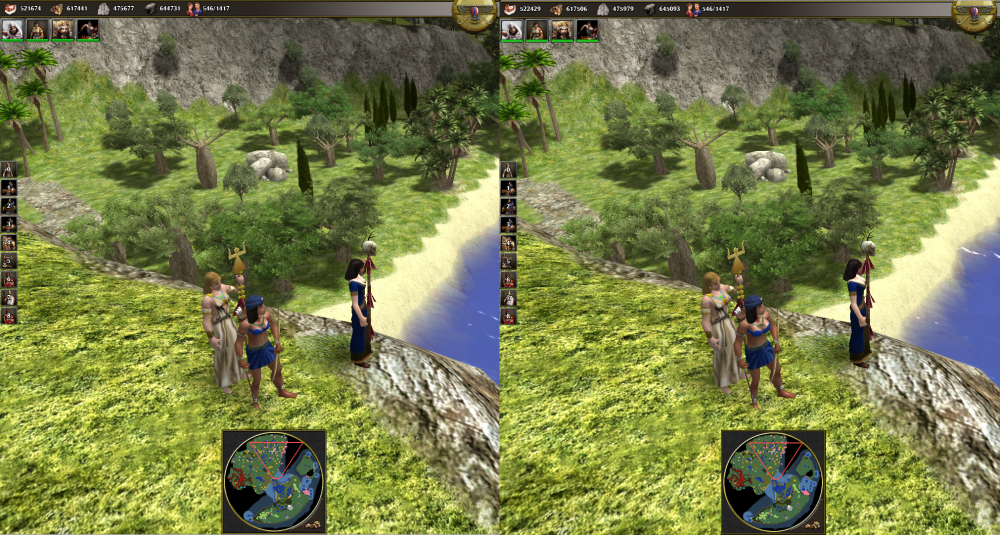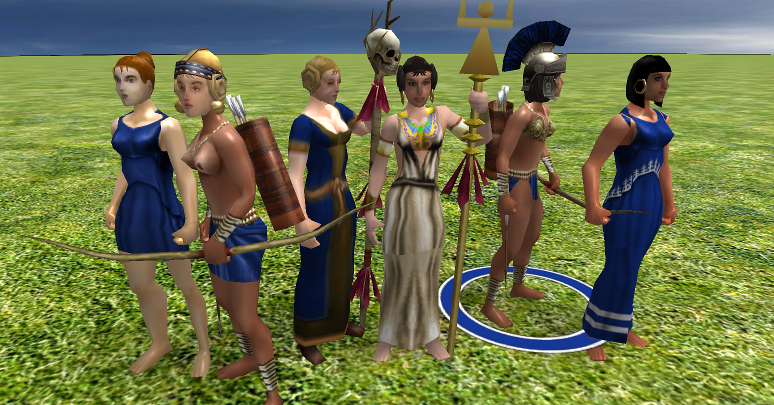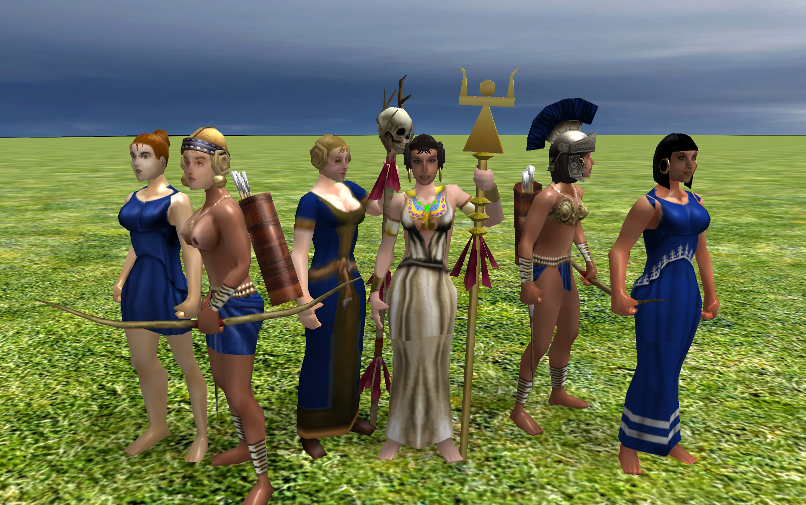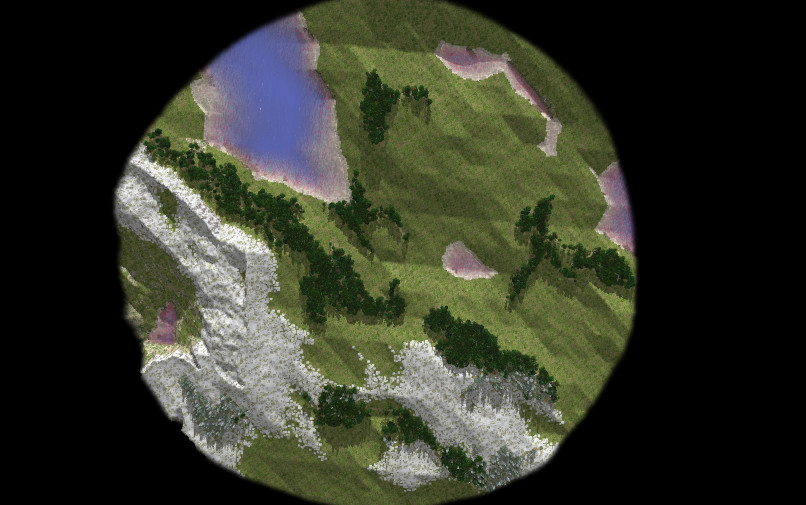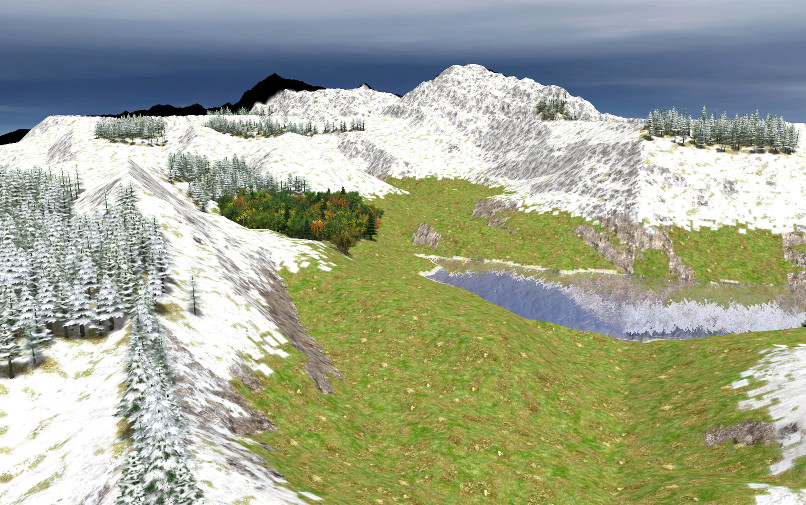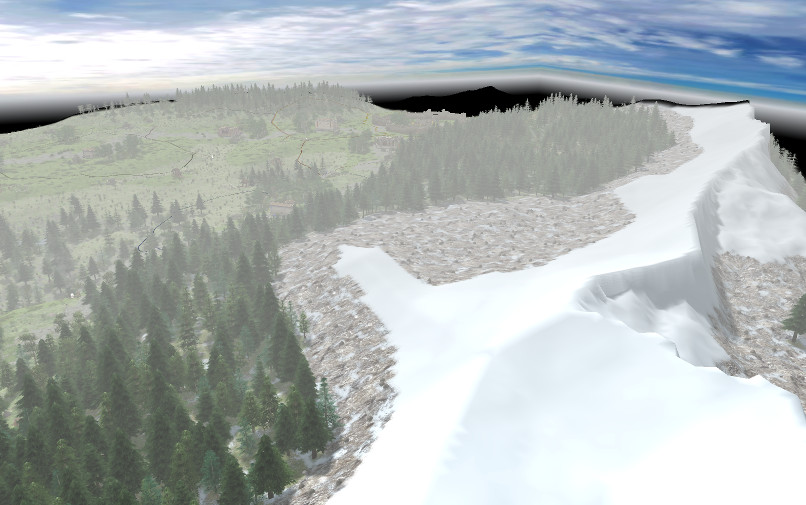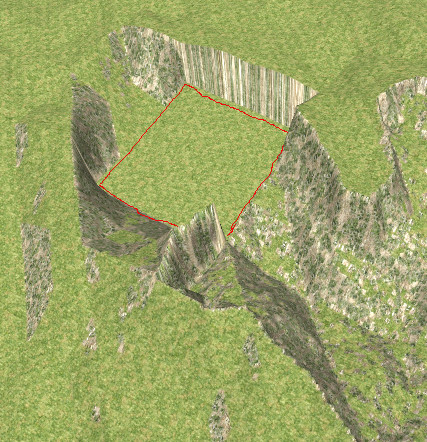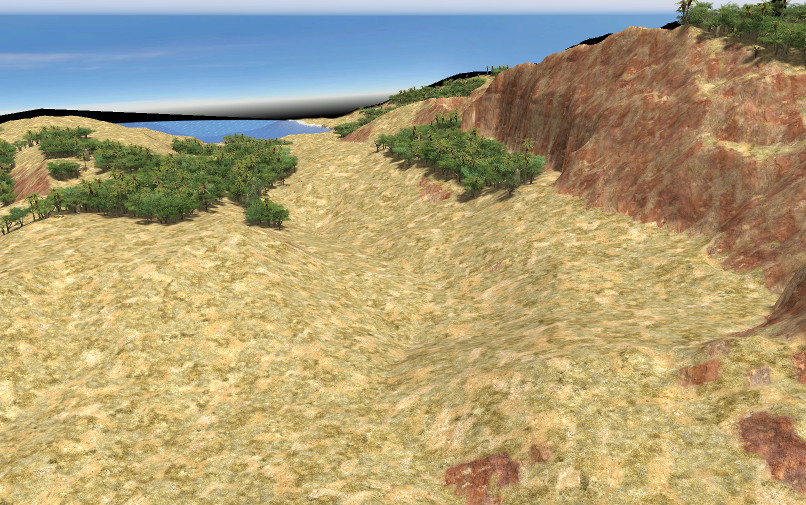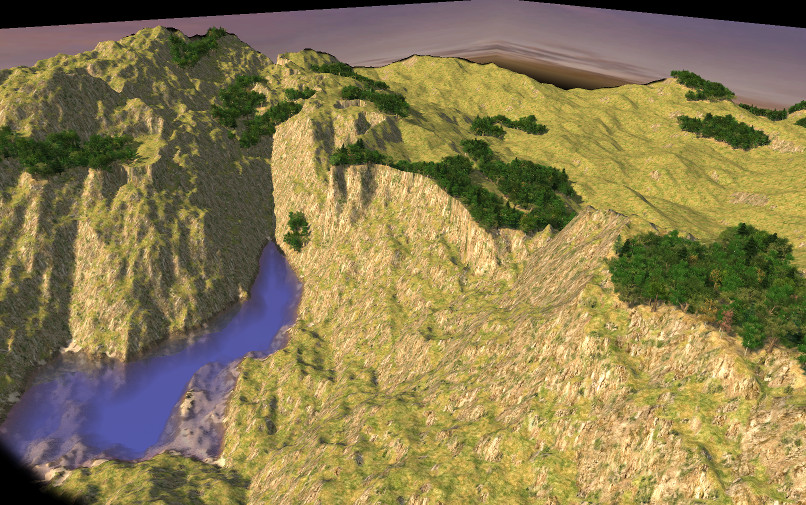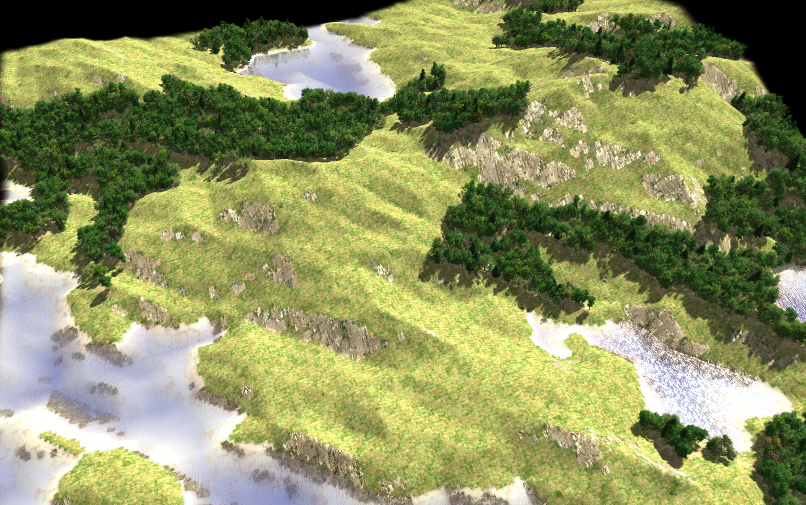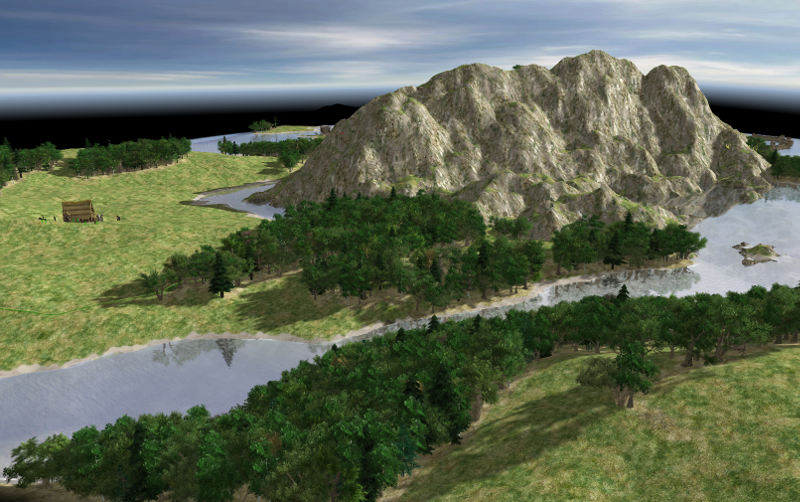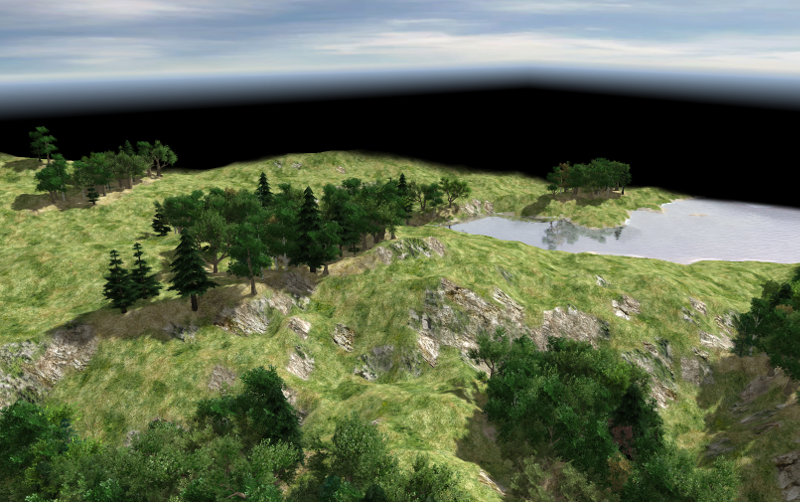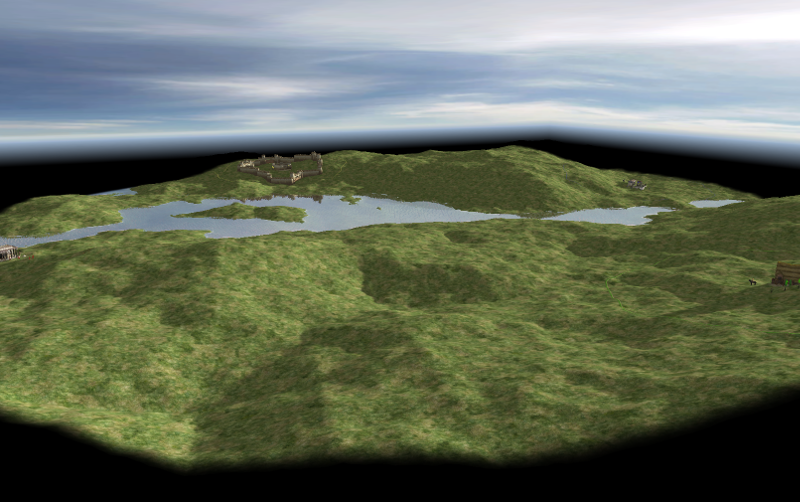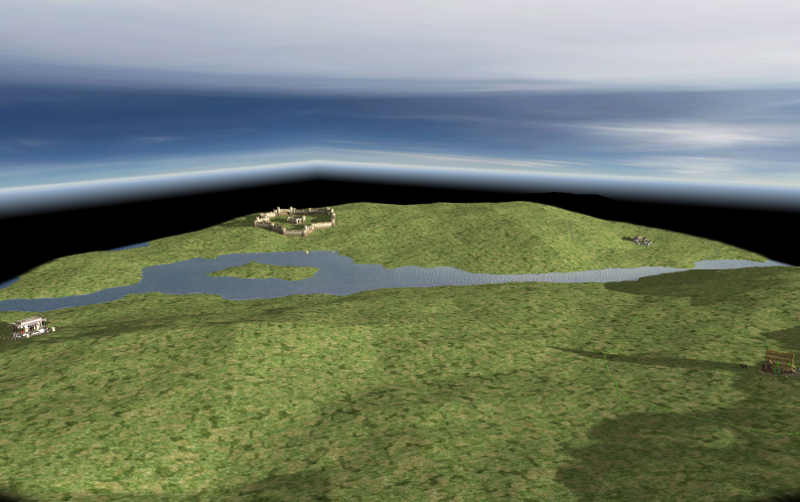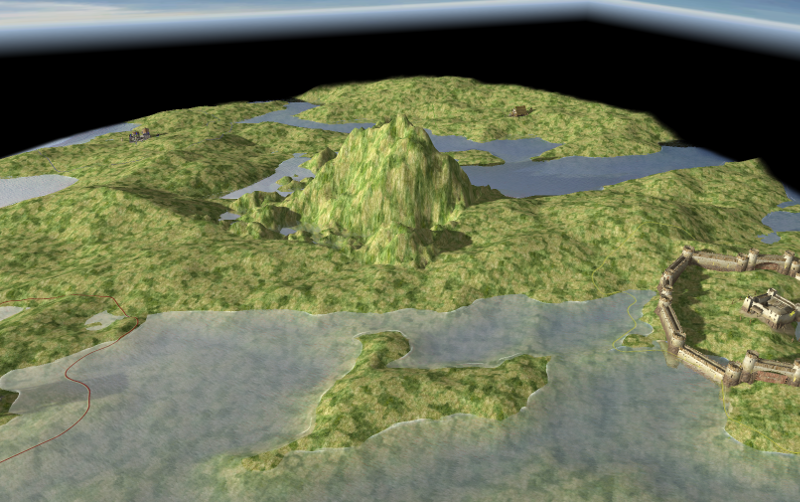
Pyrophorus
Community Members-
Posts
78 -
Joined
-
Last visited
-
Days Won
2
Everything posted by Pyrophorus
-
Yet another random map generator
Pyrophorus replied to Pyrophorus's topic in Scenario Design/Map making
I don't forget this project and I'm still working (rather lazily ) on it. But I have no substantial advance to show yet. Thanks for your interest ! -
Female meshes modification
Pyrophorus replied to Pyrophorus's topic in Eyecandy, custom projects and misc.
... or civs differences, like skin and hair colors. -
Female meshes modification
Pyrophorus replied to Pyrophorus's topic in Eyecandy, custom projects and misc.
I mean mobile structures which could be packed and moved elsewhere just like catapults. -
Female meshes modification
Pyrophorus replied to Pyrophorus's topic in Eyecandy, custom projects and misc.
I had the same idea... Which kind of buildings should we use ? Tents and some mobile homes ? It could be an interesting idea. -
Female meshes modification
Pyrophorus replied to Pyrophorus's topic in Eyecandy, custom projects and misc.
Maybe I should ask a moderator to move this thread to a general discussion about Amazons ! -
Hi everyone, You'll find here slightly modified female meshes. Not a big deal... just to give female actors a (IMHO) nicer look. If @stanislas69 didn't suggested me strongly to post it, I would never have made public this personal modification. In the game, the differences are quite unnoticeable: Original meshes are on the right. A better view in Atlas: (people offended by breast nudity shouldn't open this) You'll find the modified meshes used by the game in the first archive. If you don't already know where to put them, create the '../art/meshes/skeletal/new' folder in the 'mods/public' of your local folder. Friendly, newFemMeshes.zip amazonMesh.zip
-
Yet another random map generator
Pyrophorus replied to Pyrophorus's topic in Scenario Design/Map making
IMHO, it comes much more from the algorithm working with squares. If you try with tRough = 0.5 and tProgress = 0 (this is the plain fractal algorithm where the noise factor is exactly scaled to the edge size), you'll find those squares are still there. They are very efficiently hidden by a high noise factor of course, but the drawback is the terrain becomes hard to use for players. That's why I introduced the tProgress parameter to choke the noise factor when coming to details and smooth them. Now, your solutions: are certainly efficient, but I wonder if they're really needed. I created some hundred maps with the tour, and I would say less than five of them exhibit an obvious issue like the one we're discussing, only visible from particular point of views. I leave the point to discussion. Friendly, -
Yet another random map generator
Pyrophorus replied to Pyrophorus's topic in Scenario Design/Map making
Unfortunately, it's not a bug but a feature Most often those artifacts are unnoticeable but if you look at any map from zenith at sunset, you'll see them: At times, it creates some weird alignments like the one you marked. -
Yet another random map generator
Pyrophorus replied to Pyrophorus's topic in Scenario Design/Map making
Hi there ! Since winter is coming, it's time to deliver a new tour: Snow is of course the most prominent feature. It is disabled in savanna landscapes because there's no snowy baobab in the game for now (cruel lack !). Now, the maps conform much better to the various ratios settings (water, mountains, snow). It's done using a height histogram. So the tour no more produces empty seas or inaccessible mesas as before. I think I'll work on actors and structures placement now but there is still a point which puzzles me. As everyone can see on the picture, transitions between snow and grass are ugly. I think I read somewhere it's possible to improve that, and if someone could point me to the trick, it would be great. Thanks for you interest and support... BTW, how much time left before feature freeze ? One week ? aNewTour.zip -
Yet another random map generator
Pyrophorus replied to Pyrophorus's topic in Scenario Design/Map making
It was a joke, and a way to acknowledge clearly most of the code in the script is yours. BTW, I didn't dare to keep this call: // Apply simple erosion for (let i = 0; i < 5; ++i) splashErodeMap(0.1); in my quick hack, but you can try inserting it around line 315. I feared it could interact badly with cliffs, but I may be wrong. If you want to test that and other things on the script, I have introduced: const seaRatio = 0.1; const mountRatio = 0.15; You can tune the water and rough terrain ratios in the map with them. Not fully accurate because the height map is cropped to the map size and to a round shape, but it's better than setting those levels only from height range. And of course, this rules the bumpiness of the map: var tRelief = (MAX_HEIGHT * mapSize) / 400; // 200 < reasonnable values < 800 I have too a water erosion function in my papers, but as you say, since it's impossible to have water at different levels, it's of little use, except to create dry valleys or bogs. Friendly, -
Yet another random map generator
Pyrophorus replied to Pyrophorus's topic in Scenario Design/Map making
Hi everyone... Does this remind you something ? Of course, it's Caledonian Meadows shamefully hacked. I replaced here map generation with my own code, and... Maybe you can even play it... It's your fault, you all ! If you were not urging me like that... That's right. tProgress and tRough rule the noise factor attenuation. The problem is you don't need the same noise at large scale and details: you may want high but very smooth mountains, or a rather flat plain with very chaotic terrain. I think I can't deny anymore... Friendly, CalMeadowsHacked.zip -
Yet another random map generator
Pyrophorus replied to Pyrophorus's topic in Scenario Design/Map making
@elexis: Certainly, it's exactly what I plan to do. Rmgen has a lot of fine and useful features. No need to rewrite them. @FeXoR Should be a nice "last chance fall down" if other attempts fail. Thanks... @Servo Thanks for your interest, but there is no random map script playable for now. You'll have to wait a little. I have still a lot of work ahead. Sorry... -
Yet another random map generator
Pyrophorus replied to Pyrophorus's topic in Scenario Design/Map making
No, the map is created without any call to rmgen. I don't reject or despise rmgen at all, but my approach is different. It's something about the control you have on the map creation: rmgen tries to give you as much control as possible (even when it's about putting some random noise in the map). I'm trying to work on more fuzzy algorithms, less control on details, because I think they're very efficient to give realistic results and much more variety. I don't know very well rmgen, but do you think you can produce easily with it something like the map in the screenshot above ? If you tried a little the tour I published, maybe you marked the large variety of maps it produces (even if some are far from usable, but this will change soon). I think I could rather easily scavenge the existing random map scripts to produce very quickly new ones of more or less the same quality, and I will do that if my efforts are fruitless. But I want to follow my own path too. The problem is not new to me: multiplayers requirements are extremely difficult to match with realism and aesthetic. They just want their resources equally distributed and as little obstructions as possible, in other words, maps as plain as a chessboard, because they play some kind of chess game. Realism is only an eyecandy to them, never a challenge, but... Yeah, but you can imagine maps where finding a path to the enemy is not trivial because you must wander in a large part of very rough terrain where you can be ambushed from high cliffs and can't built anything. It's something like Hannibal crossing the Alps. In the same spirit, resources are not always equally distributed and easy to get in reality. I'm personally more interested in this kind of challenge (I would play chess otherwise ). -
Yet another random map generator
Pyrophorus replied to Pyrophorus's topic in Scenario Design/Map making
???? Secret Service Armored Olibrius ? Symmetric Strange Analytic Oyster ? -
Yet another random map generator
Pyrophorus replied to Pyrophorus's topic in Scenario Design/Map making
Hi @FeXoR Thanks for your interest I made some tests on this idea. Unfortunately, this works rather bad as one can see on the picture: The red square is flat and large enough to put a CC here, but all this looks really weird. In extreme cases, the player is trapped in a deep hole and cannot even get out to meet enemies ! I have to find something else... Friendly, -
Yet another random map generator
Pyrophorus replied to Pyrophorus's topic in Scenario Design/Map making
Hi everyone ! I should have thought people here have not much time to spare editing my script and try the settings. My bad... So in the script below, I have randomized the main settings to show the maps one can get with the library. Changing the map size and random seed in Atlas will show a large variety of maps, from flat landscapes (with or without sea) to steep mountains. It's a tour, so don't tell me there's no control on the map and the result is not predictable ! There's no need to update the library if you already install it. I put it here for those who don't have it. Friendly, aTour.zip yamg.zip -
Yet another random map generator
Pyrophorus replied to Pyrophorus's topic in Scenario Design/Map making
Thanks for your feed-back and appreciation ! OK... Yes, I don't forget the maps must be round and they shall be. BTW, it's easy to set the round flag in the json file. But it's still a work in progress, so it's easier to see accurately how the script works on square maps. For now, I'm working on improving relief variety. Basically the script produces homogeneous maps, e.g. steepness and smoothness are everywhere the same. In the last picture I posted, maybe you noticed there is a rather flat part of the map. The idea is to have steep peaks and flat valleys, and more maybe (underwater and shore relief also are different). let peakHeigth = tRelief /3; for (let i = 0; i < mSize; i++) { for (let j = 0; j < mSize; j++) { if( tMap[i][j] > peakHeigth) tMap[i][j] = -1; } } var tRough = 1.05; // this one rules the ground irregularity, from 0.1 (smooth) to 1.2 (very chaotic and probably not playable) var tProgress = 64; // difficult to explain this in few words, try it from 2 to mapSize (power of two). See algorithm for details. createAltitudes(0, mSize, 0, mSize, (tRelief * 1.5)); // redraw high peaks It's how it works: parts of the map higher than some limit are redrawn with parameters giving this kind of chaotic terrain, leaving the lower parts untouched. Yeah, I will do that But I'll try a rather ambitious idea. Instead of spreading resources everywhere equally on the map, I will try to put them in rather realistic places (like stone at the foot of the cliffs and so on), and later try to find optimal settlements, given this resources layout (some kind of barycenter of resources, on flat places and so on), just as real people would do colonizing a new land. I have no idea if this could work and give rather balanced maps. Spontaneously, I would say: certainly not. But who knows ? Friendly, -
Yet another random map generator
Pyrophorus replied to Pyrophorus's topic in Scenario Design/Map making
@stanislas69 Thanks for your reply. About control, it's an important point. Of course, you need some, and much more in the second use case, but IMHO, the more control you have, the more work you need to put it at use. And I think when you accept some lack of control, you can be rewarded obtaining something you would never have imagined. For myself, I would never have imagined a map like the one in the previous post, and creating it with a height map would be a very, very long task (except if you use an existing one). This is why I work on random map creation instead of designing maps from scratch. Results are IMHO most often far better than what I could get all by myself. Friendly, -
Yet another random map generator
Pyrophorus replied to Pyrophorus's topic in Scenario Design/Map making
I can't resist the pleasure to share this, produced with yamg in Atlas: Now, I have another question. I think I see two use cases of random maps in OAD. - Map designers can use them as a starter for their work (I think painting by hand something like this picture above, would cost a lot of time) - Random maps designers try to write scripts creating playable maps out of the box, of any dimension and random seed. Which is the most important one ? Friendly, -
[Random Map] Realistic Terrain Demo
Pyrophorus replied to FeXoR's topic in Scenario Design/Map making
Hi FeXor Thanks for your interest and appreciation. I created here a new topic to stop polluting your thread. Friendly, -
Hi everyone ! So here is my little random map generator library. This alpha version is far from perfect yet, but I hope it deserves an eyeshot already. The archive contains two files and a folder to insert into your local settings at: Oad/mods/public/maps/random. The 'yamg' folder contains a library used by the demo program which creates a random map (Venustas only, it seems there are some differences with earlier versions). Of course, if you prefer all in a single file, you can copy/paste the whole library replacing the 'RMS.LoadLibrary("yamg");' instruction at the beginning of the map script 'aYamgDemo.js'. The picture here is a 'medium' map using the '7964' random seed value. I only changed the default sun settings to emphazise the relief. Open the map script and feel free to discover the various settings and options. You shouldn't need to edit the library itself. Just be careful with forests on large maps: the script could try to place a huge number of trees and will then choke Atlas. Have fun ! Now, I must say I'm not satisfied with this program for some reasons and would be glad to have a discussion about them. Of course, many details could be improved like round maps correct management and terrains melting, for instance. But this not really a big deal. A more serious reason is the library is too low level IMHO. For instance, someone could want a river crossing the map, a mountain in the north-west and so on. It's possible to do that with the library, but it's far from obvious and easy. I need ideas to build a higher level framework, and if you have some, you're welcome. The last reason is more abstract. I have worked for years on the topic (creating random maps for games like OAD), and always stumbled on the same problem: creating realistic and good looking maps is one thing, but most often, realistic maps are not balanced at all and even not playable. And well balanced maps are often not very realistic, because they are too regular and exhibit kind of patterns. The real challenge is to have both, and I don't know if it is even possible (contradictory?). This is why I don't rush to code other things like roads or resource placement. How could we define a balanced map in terms of constraints, this is the question I ask to everyone interested here, and I hope to have a discussion about it. Friendly, yamg.zip
-
[Random Map] Realistic Terrain Demo
Pyrophorus replied to FeXoR's topic in Scenario Design/Map making
Hi all ! Looks better with some terrain painting and forests... thanks to the rendering engine and 0.A.D artists ! The script is far from complete and perfect for now (my first Javascript program !). That's why I don't give it, but I hope I'll can share rather soon a little library for use along with rmgen. Friendly, -
[Random Map] Realistic Terrain Demo
Pyrophorus replied to FeXoR's topic in Scenario Design/Map making
Hi all ! Not sure I should create a thread for such a little thing... In the script below, you'll find a function which creates heightmaps, an alternative to diamonds square method. Smoothing is integrated in the function, and is scale based, not uniformly applied on all tiles. Maybe this could profit to someone. More of it, you can reapply the function on parts of the map (with different parameters of course). In landscape-3, a rough mountain is surrounded with softier terrain. Don't tell me painting and starting placement are really poor. Yeah, I know... I haven't yet fully scavenged FeXor great work, but I will soon ! aFractalDemo.zip -
Thanks to you all ! OK, I'll check this, even if... [EDIT] Actually, it works... Great... I mean specifications/properties/values for a structure or a unit. For instance, if I change the Attack/Hack value in a unit file, I think I will see this new value in the unit info, even if I load a saved game where the unit had previously another value. But it seems it's not the case with structures (they keep their original values AFAICS). Is this right ? Thanks for this great resource. It's just what I expected. Friendly,
-
Hi everyone, New to the game, I created a new civilization to explore all the technologies, units and so on. The way one can modify the game even in details is really impressive and really easy. Thumbs up !!! Just a little thing: it would be nice to have a DTD for units/structures xml files, mainly to offer the many options the various tags have. For instance, the <passability_class> have "large" and "default" possible values, but you have to scan many files to discover that (and maybe there is another value I missed ! :-)). Now with my questions: I tried to give a <Capture> attack to siege tower (inheriting from template_unit_mechanical_siege_tower). In the game, the siege tower has the "capture" cursor, and clicking a building make the tower move and stop at the "MaxRange" distance, but then, no capture happens. The tower keep shooting arrows and the capture bar of the building don't change. Is it normal or I missed something ? When loading a saved game, at least some specs of the units are updated from the description files (if changed meanwhile), but structures specs are not. Is this correct ? Thanks in advance for the replies... Friendly,


